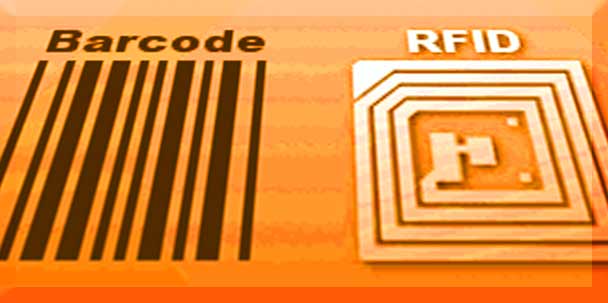By Cynthia Bellian
While there are similarities, some noteworthy differences between a bar code system and RFID may be the factors to determine which is better suited for your needs. The right solution for your application will depend on whether your situation better aligns with the capabilities and attributes associated with each data collection technology.

Each technology has its advantages and disadvantages. Key considerations include the nature of the processes and supply chain environment, impact in human capital or improving yields, need for data accuracy or item level identification and tracking, service life, and budgets.
BAR CODES: Advantages and Disadvantages
Bar codes rely on optical technology for the data to be read and collected. Today bar codes are simple and universally used because bar codes are inexpensive and a variety of scanners are widely available and affordable. They are ubiquitous in supply chain, distribution and retail applications but due to its physical dimensions are limited in the type and amount of data that can be presented on a bar code. For retail applications barcodes denote only the product type and its manufacturer.
Bar codes require direct line of sight for the data to be read and captured which is generally limited to within several inches in retail applications to a few feet in distance for warehouse applications. Bar codes are read one at a time which can be labor intensive and must necessarily be positioned on the outside of item packages or containers to achieve direct line of sight reads. This introduces higher wear and tear, adversely impacting the integrity and quality of the bar code, and may lead to read failure or interference. Dirty, obstructed or ripped bar code labels cannot be effectively scanned.
Applying a bar code can cost a fraction of a cent or a few pennies. Its form is typically less durable at that cost and can be easily damaged, and may be at risk for counterfeiting since they are easily copied.
Bar codes may be better suited for closed loop supply chains and process manufacturing where liquids and metals are part of the equation since liquids and metals cause interference with certain radio frequencies.
RFID: Advantages and Disadvantages
RFID works on radio frequency technology and can provide unique item level identification. Unlike bar codes which has static data and can only be read, RFID tags are dynamic and can read, write and update, even activating other transactions and events. RFID tags are capable of tracking the lifespan of an item since they have the memory capacity for more data, can be re-programmed and may even be reused. Encryption or password protection offer better data security and are more difficult to counterfeit.
Both Passive and Active RFID options are available. The key difference between these two types is their power source for transmitting signal.
Active RFID tags include a battery that will automatically send the data, whereas passive RFID tags are without power and signals are only activated when RF energy is emitted by a reader in range. Distance can be as far as 40 feet for fixed readers, or 20 feet for hand held readers. Once installed fixed readers do not need human involvement to capture the data, but hand-held readers are similar to hand held bar code scanners which require human labor to operate.
The price of a single-trip and a multi-trip passive RFID tags typically range from $0.10 to $4.00 per piece. Active RFID tags are more expensive, costing as much as $5 to $50 per piece when fully loaded with a broad range of options and functionalities, such as motion or temperature sensors or tampering indicators. They have longer read ranges as far as hundreds of feet or more and last about 3 to 8 years depending on the rate of broadcasts.
RFID formats are more durable and have longer service life where inlays are encased and protected. Some durable passive tags may have a service life of up to 10 years and can be embedded in containers and packaging to perform in harsh environments. There have been advancements in overcoming interference for processing involving liquids and metal through additional protection and positioning, however limitations still exist.
Because RFID has superior read rates, it may be the preferred choice for a more complex supply chain that’s not closed loop, with high volume transactions. If your operation is looking to read multiple items in a single pass and requires identification or tracking of a product at the unique item level then RFID will outperform a bar code system especially when fully accounting for the labor costs, resulting in significant total cost disadvantages.
For a system that automatically captures data through the normal course of operations and processes, RFID is a solution that does not require human intervention, since strategically positioned readers and antennas accomplishes the data capture as events and activities occur. Although RFID tags cost more than bar code labels, moving to an RFID system will eliminate more intensive labor costs associated with individual scanning of items.
Summary: Bar codes and RFID technology each have their fit depending on the parameters of an operation. Some facilities have implemented a hybrid approach which uses bar codes for item level identification, but RFID tags for the bulk or aggregated units, eliminating the need for each individual item on a pallet to be opened and scanned. The strengths of each technology can be leveraged and coexist to enhance visibility throughout the supply chain. The key comparisons following will help you determine a solution.
A DOZEN POINTS OF COMPARISON




